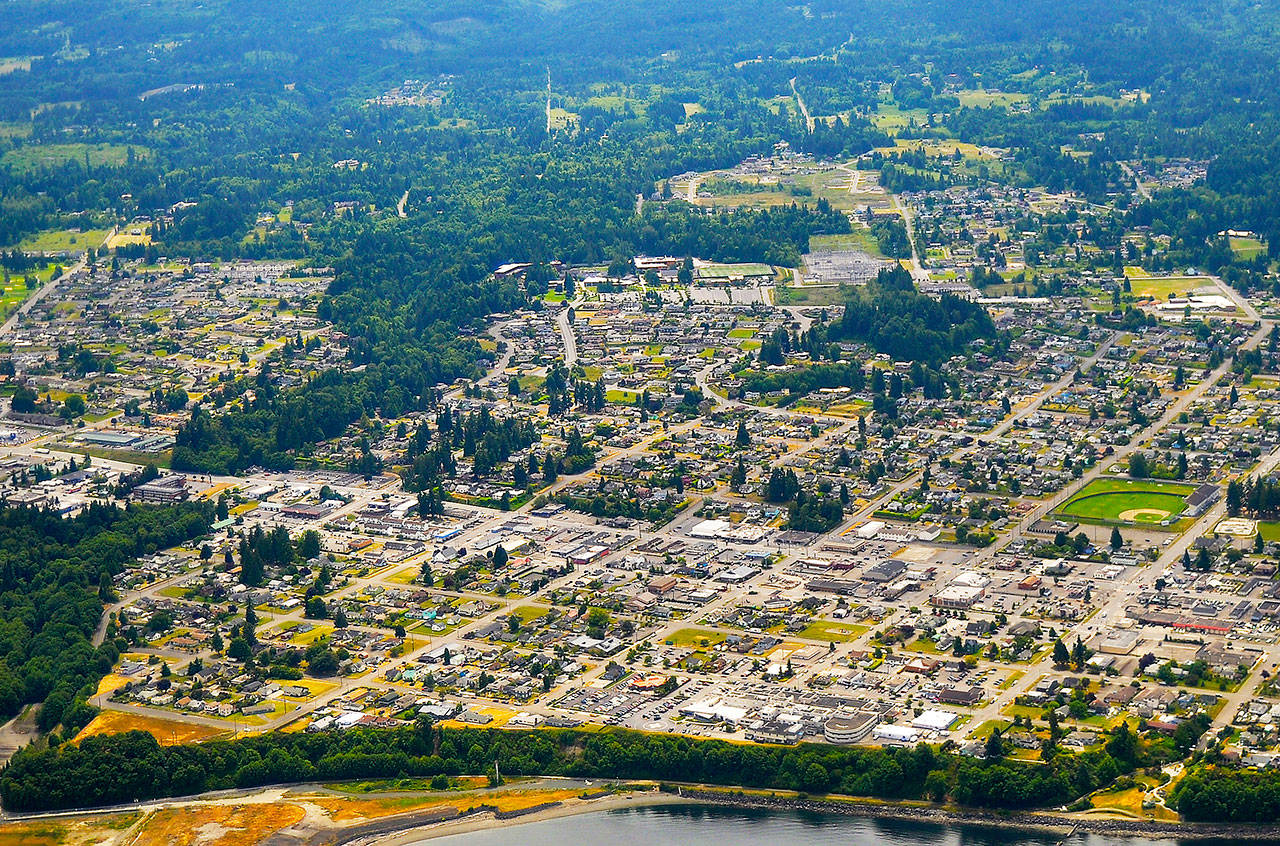Clallam County is in the early stages of overhauling management policies for stormwater — water created by rainfall and snow melt that runs off into sewers instead of going into the ground — as local leaders look to address issues created by increases in land development.
Carol Creasey, a hydrogeologist with Clallam County, detailed the county’s efforts to address stormwater at last week’s meeting of the Dungeness River Management Team (DRMT).
Of concern, she said, is the amount of development that has taken place across Clallam County in the past 25 years. Creasey showed several examples of comparisons of aerial shots from the early 1990s and 2017 showing just how much more land in areas around Sequim and Port Angeles have had large numbers of homes or businesses on them.
A significant amount of “impermeable surface area” such as buildings, roads and other pavement don’t allow water to soak back into the ground but instead turn into stormwater runoff, she told DRMT representatives at the Nov. 13 meeting at the Dungeness River Audubon Center.
According to Washington State University statistics that Creasey presented last week, land development can increase the percentage of water from rain or snowfall that turns into stormwater from around 0.3 percent of the total to 30 percent of the total, which in turn reduces what evaporates into the air or gets absorbed back into the ground.
The other issue stormwater presents, Creasey said, is that as it runs along impermeable surfaces it picks up pollutants and toxins that eventually wind up in Puget Sound.
“Recent studies have shown that 75 percent percent of toxins in the Puget Sound come from stormwater,” Creasey said during the presentation.
Similar efforts between 2010-2014 came to no complete conclusion, so Clallam County is using a stormwater policy manual from 1992; however, Creasey said they do have more modern materials they can refer to when appropriate for a given project.
Creasey noted that the county’ newest efforts will be bolstered by having support from county commissioners, the public works director and county engineers that “just wasn’t there” nine years ago, as well as a “major push” from the Washington State Department of Ecology to address stormwater management issues.
As far as what comes next to enhance how the county manages stormwater, there’s a long road ahead, Creasey said. Clallam County recently received $100,000 funding from the National Estuary Program — a source funded through the Environmental Protection Agency — and will be using that to add extra staffing capacity to the project, including hiring a consultant with stormwater expertise, she said.
Creasey added that previous work groups and document update processes from the 2010-14 efforts in this area will be re-started, which should help with the overall process since they won’t be starting from scratch. This will include work to develop new county ordinances for stormwater management, as well as updating existing ordinances.
This work has not begun yet, in part because Creasey and her department want to make sure to get community input to know what they want to see. That will come in the form of public input on those work groups, as well as a series of public hearings that have not been scheduled as of yet.
Creasey said that she was expecting the work groups and hearings to begin in early 2020.
To learn more about Clallam County’s stormwater management efforts, go to clallam.net/LandUse/Storm water.html.



